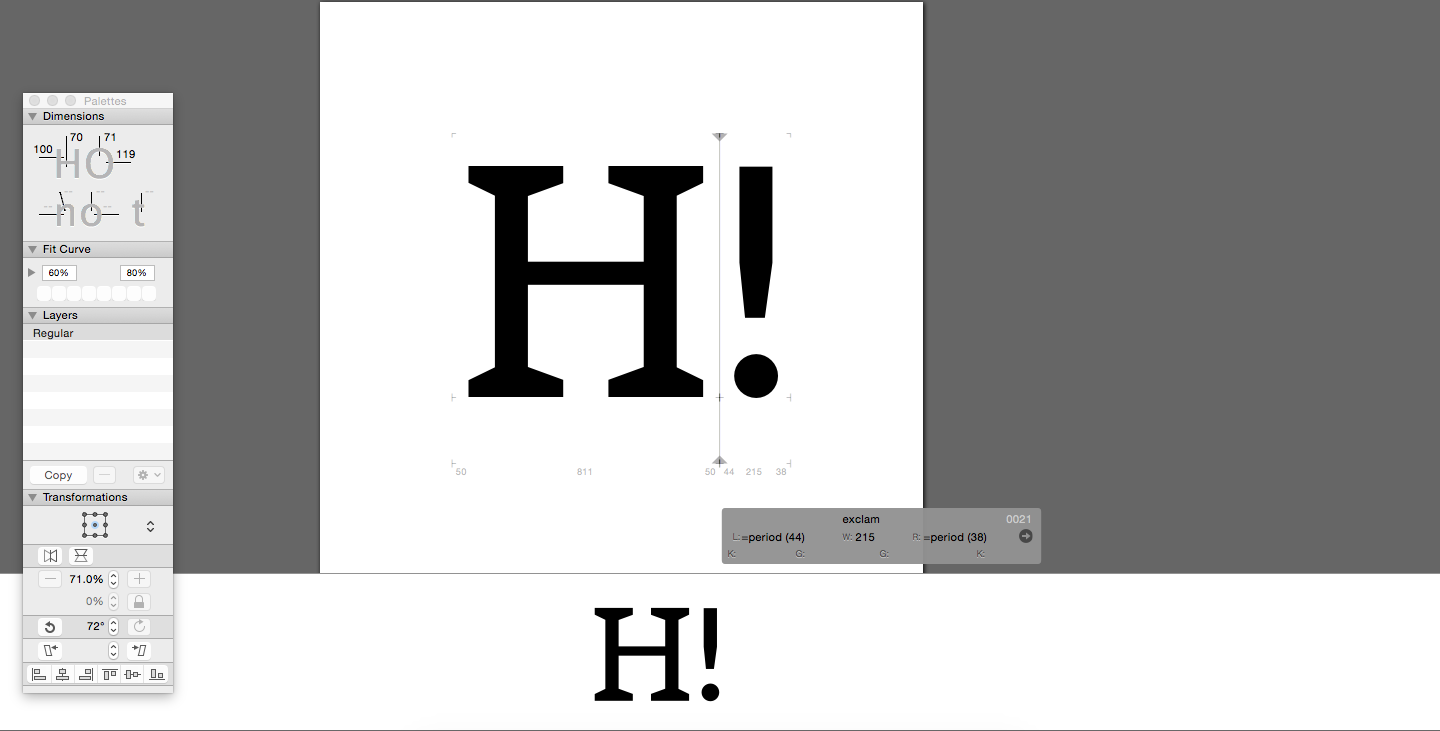Creating Alternate Characters
One benefit of the OpenType & Unicode is the allowance of alternate characters within the same font file. I wanted to include some Victorian eccentricities within the typeface, which you will see below.
Experimenting with an A with a diagonal crossbar:
Experimenting with an R with an elegonated tail - I chose to remove this as I felt it did not work.
A selection of alternate A's:
Trying out an alternate crossbar for the B:
A curved crossbar in the H, to match the A:
After discussing the height of the central bar for the E, I decided to include two different options, one as an alternative:
The E crossbar doesn't line up anywhere near the A, which is the same for the H alternative. However, I quite like the imperfect look it offers. The original inscriptions had these imperfections, and I think it would offer a unique way of working with the font:
The original inscription had an O with classic proportions, which was taken away for consistancy. However I liked the idea of including it as an alternate character:
Adding Punctuation
Obviously to create something usable, punctuation is needed. Here are a few characters that were added.
Asterisk:
Exclamation mark:
Colon:
Em dash:
Colon:
Quotation marks and a comma:
Unique Characters
I thought it would be fun to create a 'alternate character' that showed where the font had been designed. For example, if the user types 'UK', 'CZECH' or 'AUSTRIA', a silhouette of that country could also be used.
Although this is quite a fun idea, I thought it would be entirely useless, so was later dropped.
CZECH:
AUSTRIA:
All three together:
Back To Some Alternate Characters
Below I experimented with a different W, but I felt the double central serif's added too much weight to the character, which would look even heavier at small scale.
I also worked on a similar but alternate option:
An alternate Q, with a larger swash:
Creating Some Numerals
After Marsi had created a beautiful 5 and 7, I had some weights and proportions to work with.
Below I created number 1:
Number 2, using Marsi's '5' Serif:
Creating an 8 is always difficult, at this stage it felt too heavy in comparison to the other characters:
Working on the 6 and 9 - These used similar propotions to the 5. However serifs were not added as they seemed to make the shape appear too heavy. I am still contemplating adding them though...
Ornaments
Inspired by 'Hoefler Text', I thought it would be great to add some ornamental characters.
Below you can see an idea I had for a border:
Another border design:
What should I add as corner pieces?
Another ornament, which I worked on symmetrically:
Working on another ornament, this one a lot more detailed with flourishes:
From the previous ornament, I could create some corner pieces:
This helped when creating much more basic forms:
Ensuring the design fits into a box:
Some quick tests:
As you can see, some of the flowers stem is too thin and detailed. For this reason I made the form simpler and thicker.
A simple, yet fun, circular ornament:
This was experimented with in a negative colour, but I feel it didn't work.

































































































